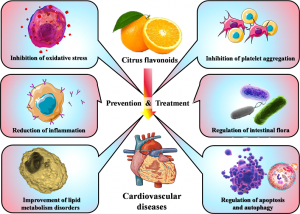
February is American Heart Month – the ideal time to focus on cardiovascular health.
In 1964, President Lyndon B. Johnson, who had personally experienced a heart attack, issued the first proclamation that recognized February as American Heart Month. All subsequent U.S. presidents have also declared February as American Heart Month. Heart disease is the number one cause of death worldwide, so consider taking extra good care of your heart and educating your patients about heart disease now.
In addition to maintaining a healthy lifestyle, which includes:
- Not smoking
- Achieving a healthy weight
- Controlling blood sugar and cholesterol levels
- Treating high blood pressure
- Getting at least 150 minutes of moderate-intensity physical activity a week
- Getting regular checkups1
Research shows certain nutrients, botanicals, and other natural compounds also support a healthy heart.
This in-depth article discusses bioflavonoids and the beneficial effects citrus bioflavonoids have on the cardiovascular system.

What are Bioflavonoids?
Bioflavonoids are natural plant-based compounds that offer many health benefits. They are also known as flavonoids and were previously called Vitamin P.2,3 Research shows this diverse group of natural compounds have blood sugar-lowering, cholesterol-lowering, anticancer, kidney-protective, liver-protective, and antioxidant properties when consumed as part of a healthy diet.2 So far, more than 5000 different flavonoids have been discovered.4
The basic structure of bioflavonoids includes 15 carbon atoms and two phenolic rings that carry one or more hydroxyl groups (OH). See the picture of quercetin below as one example of a bioflavonoid.2
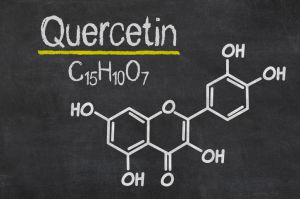
According to their various structures, bioflavonoids can be divided into six different classes, which are known as flavones, flavanols, flavanones, isoflavones, flavonols, and anthocyanidins.2
What are Flavones?
Flavones play a variety of roles in plants. They are responsible for the white and cream colors in flowers. They also act as co-pigments with anthocyanidins in blue flowers. Flavones protect plants from UVB light, and their levels increase with exposure to UV light. Flavones are natural pesticides, and they provide plants with protection against insects and fungal diseases.5
Flavones are present in many plants, though their concentration varies depending on many factors, including exposure to UV light. Flavones are found in chamomile flowers, oregano, parsley, sage, green and black teas, peas, citrus fruits, rice, bell peppers, celery, and other plant foods. Flavones that are known to offer health benefits include vitexin, luteolin, and apigenin.5
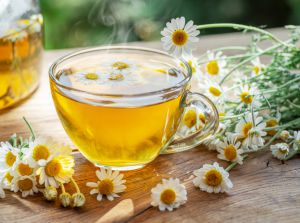
What are Flavanols?
Flavanols are present in many common foods, including legumes, tea, cocoa, grapes, apples, and grains. Green tea and chocolate (cocoa) are especially rich sources of flavanols. Examples of flavanols that are known to offer significant health benefits include epigallocatechin-3-gallate (EGCG) and theaflavins.6
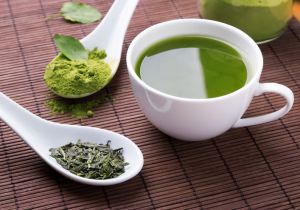
What are Flavanones?
Flavanones are one of the main classes of flavonoids, and over 400 unique flavanones have been identified. Significant amounts of flavanones are present in citrus fruits. Some of the citrus flavanones that are known to offer health benefits include hesperetin, naringenin, eriodictyol, and hesperidin.7
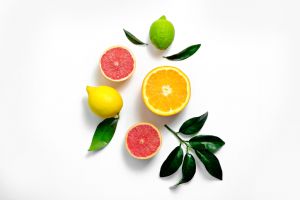
What are Isoflavones?
Isoflavones are primarily present in legumes but are also found in red clover (Trifolium pratense), white clover (Trifolium repens), and alfalfa (Medicago sativa). The content of isoflavones in plants depends on the growing conditions, preservation methods, and other factors.8
The isoflavone concentration increases sharply during stressful conditions, such as low humidity or the presence of pathogens. In soybeans, the isoflavone daidzein helps defend against several pathogens that could harm the plant, including fungi, which is why the level increases when pathogens are present. Isoflavones that are known to have an impact on health include daidzein, genistein, and glycitein.8
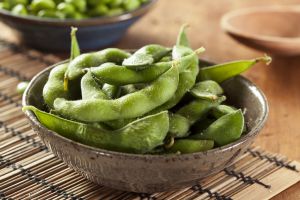
What are Flavonols?
Flavonols are the most abundant flavonoids, and they are present throughout the plant kingdom.9 Naturally occurring flavonols include quercetin, kaempferol, myricetin, isorhamnetin, morin, galangin, fisetin, kaempferide, azaleatin, natsudaidain, pachypodol, and rhamnazin. Good sources of dietary flavonols include onions, capers, tea, saffron, apples, parsley, kale, lettuce, tomatoes, broccoli, grapes, and berries.8,10
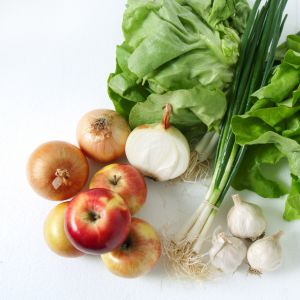
What are Anthocyanidins?
Anthocyanidins are water-soluble, non-toxic organic compounds that are responsible for the intense red, blue, and purple colors found in fruits, flowers, and vegetables. In plants, they play protective roles in absorbing harmful radiation, transporting sugars, and adjusting fluid balance during periods of drought or frost. They also offer antioxidant benefits to plants. Anthocyanins are anthocyanidins with at least one sugar molecule attached.11 Anthocyanins and anthocyanidins are used as natural coloring agents instead of potentially toxic artificial colors and synthetic dyes.12
Anthocyanins and anthocyanidins have been extensively studied for their health benefits. Research shows they offer antidiabetic, anticancer, anti-inflammatory, antimicrobial, and anti-obesity effects. They also contribute to the prevention of cardiovascular disease. Foods that are rich in anthocyanins and anthocyanidins include berries, blackcurrants, purple corn, red hibiscus flowers, lavender flowers, black carrot, red cabbage, grapes, pomegranates, red sweet potato, and purple potato.12
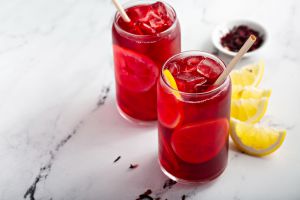
The Cardiovascular Benefits of A Full-Spectrum Citrus Bioflavonoid Complex
Citrus fruits are an especially rich source of bioflavonoid compounds. The dietary flavonoids present in citrus fruits include hesperidin, hesperetin, naringin, naringenin, diosmin, quercetin, rutin, nobiletin, tangeretin, and many others. Common citrus fruits that contain these flavonoids include bergamots, grapefruits, lemons, limes, mandarins, oranges, and pomelos.2
Citrus flavonoids offer an impressive array of health-related benefits. In general, citrus flavonoids offer antioxidant, cell-protective, and anti-inflammatory properties throughout the body. Since inflammation and oxidative stress play significant roles in the development of cardiovascular disease, it makes sense that an increased intake of citrus flavonoids could support a healthy cardiovascular system. Ample research confirms the intake of citrus flavonoids is associated with improved cardiovascular outcomes.2
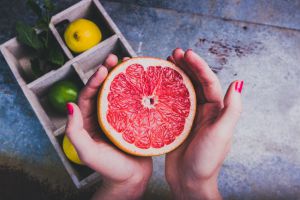
In fact, bioflavonoids are already utilized for the clinical treatment of cardiovascular disease by some healthcare providers since research shows they offer:
- Cardiotonic benefits
- Increased coronary blood flow
- Anti-arrhythmia activity
- Blood pressure normalization
- Reduced cholesterol levels
- Optimal phospholipid ratios
- Reduced capillary permeability13
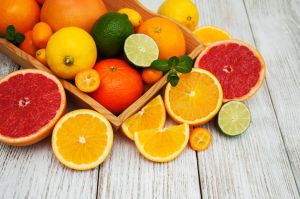
Citrus flavonoids prevent cardiovascular disease through multiple mechanisms and different pathways, including the inhibition of oxidative stress, optimization of platelet aggregation, reduced inflammation, improvement in lipid metabolism, regulation of cell death (apoptosis and autophagy), and modulation of the gut microbiome. For a summary of these actions, see the illustration below.13
Image credit: Deng Y, Tu Y, Lao S, et al. The role and mechanism of citrus flavonoids in cardiovascular diseases prevention and treatment. Crit Rev Food Sci Nutr. 2022;62(27):7591-7614. doi:10.1080/10408398.2021.1915745
When healthy, the body maintains a dynamic and optimal balance between oxidation and anti-oxidation. Once this delicate balance is disrupted, reactive oxygen species (ROS) and reactive nitrogen are produced by oxidative stress and cause damage to cells. Nearly all bioflavonoids offer antioxidant activity.13
Antioxidants are compounds that delay or inhibit the oxidation of molecules in the body; a high level of reactive oxygen species (ROS) is the major cause of cell death throughout the body.2 According to reports, flavonoids are the most powerful compounds that fight ROS and protect cells against oxidative stress. The antioxidant properties of citrus flavonoids allow them to inactivate ROS and scavenge free radicals to improve vascular endothelial inflammation and lipid levels and protect cardiovascular function.13

An abundance of epidemiological data indicates eating more fruits and vegetables reduces the risk of cardiovascular diseases. Moreover, when the consumption of citrus fruits or their juices is specifically analyzed, we also see a significant reduction in cardiovascular events.13
Cardiovascular diseases include atherosclerosis (hardening of the arteries), stroke, and other conditions. Several health concerns, such as hypertension (high blood pressure), hyperlipidemia (hypercholesterolemia), diabetes, and obesity, increase the risk of developing cardiovascular disease. The research explored below suggests citrus bioflavonoids significantly improve the health of those with diabetes, obesity, hypertension, atherosclerosis, stroke, and hyperlipidemia.2*
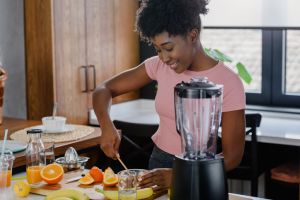
What is Atherosclerosis?
Atherosclerosis involves the abnormal deposition of fibrous tissue, cholesterol, and lipid plaques in the innermost layer of the large- and medium-sized arteries. Atherosclerosis is driven by chronic inflammation, and the plaques lead to the hardening and narrowing of the arteries.2
Atherosclerosis affects the basic structure of vessels and can result in the partial or complete blockage of arteries. When atherosclerosis affects the coronary arteries, it can cause ischemic heart failure and heart attacks. High cholesterol levels, hypertension, smoking, and diabetes all increase the risk of developing atherosclerosis.2
Genetic studies show drinking orange juice (500 mL per day) for four weeks affects the expression of 3,422 genes, including a large number of genes that play a role in inflammation and atherosclerosis. Participants in a clinical trial who drank 500 mL of red orange juice every day experienced significant improvements in the function of their vascular endothelial cells and levels of inflammation in the blood vessel walls.13
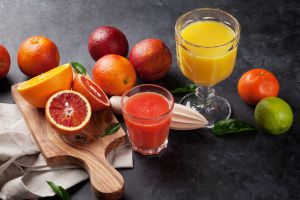
A 90-day randomized, double-blind, placebo-controlled trial that included obese participants with an atherogenic index of plasma (AIP) of over 0.34 determined a citrus bioflavonoid complex reduced fasting glucose by 18.1%, triglycerides by 32%, and cholesterol parameters by up to 41.4%. The citrus bioflavonoid complex included neoeriocitrin, naringin, neohesperidin, melitidin, bruteridin, and other bioflavonoids.14
The AIP is an objective measurement of the unfavorable blood lipid profile that increases the risk of developing atherosclerosis. AIP values above 0.21 indicate a high risk of developing atherosclerosis and other cardiovascular diseases, while AIP values below 0.2 correlate with a low risk of developing atherosclerosis. Overall, the beneficial effects of the citrus bioflavonoid complex caused a powerful reduction in the AIP in the group that received the high dose of the bioflavonoids. The robust dose of the citrus bioflavonoid complex reduced the AIP to less than 0.2 in all participants to significantly decrease their risk of developing atherosclerosis.14

What is Hypertension?
Hypertension is elevated blood pressure. It is the #1 contributing factor to all-cause global mortality and affects nearly 1.4 billion adults worldwide. Hypertension is the primary risk factor for ischemic stroke, hemorrhagic stroke, and coronary artery disease. Moreover, hypertension increases the risk of developing renal failure, heart failure, peripheral vascular disease, and many other medical conditions.15
Normal blood pressure is necessary for the healthy activity of the cardiovascular system and optimal blood flow. Citrus fruit flavonoids act as vessel relaxants and help maintain optimal vasculature tone. An animal study showed that taking hesperidin for eight weeks significantly reduced blood pressure, oxidative stress, endothelial dysfunction, and other cardiac and vascular abnormalities.2
A double-blind, cross-over study conducted at the Metabolic Unit at Kaplan Medical Center in Rehovot, Israel assessed the effects of sweetie fruit juice on subjects with stage I hypertension. Sweetie fruit is a hybrid between grapefruit and pummelo with a very high content of flavonoids, including naringin and narirutin.16
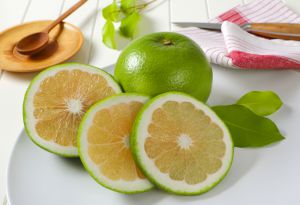
Participants alternately received high-flavonoid (HF) sweetie juice and low-flavonoid (LF) sweetie juice for five weeks. The HF juice reduced both the systolic and diastolic blood pressure (DBP), and the LF juice reduced the systolic blood pressure (SBP) in participants.16
A randomized, parallel, double-blind, placebo-controlled trial that included 159 hypertensive participants looked at the effects of a placebo, orange juice (OJ), or hesperidin-enriched orange juice (EOJ) on blood pressure and pulse pressure (PP), which is a measurement of arterial stiffness. The participants were divided into three groups that consumed 500 mL of juice daily for twelve weeks. The average reductions in SBP throughout the study were −6.35 and −7.36 mmHg for the OJ and EOJ interventions, respectively. Overall, the results illuminate a dose-dependent decrease in SBP and PP after sustained consumption of hesperidin. Chronic consumption of the EOJ also enhanced the acute postprandial decreases in SBP, DBP, and PP.17
Another clinical study that included patients with type 2 diabetes confirmed that consumption of 500 mg of hesperidin per day over six weeks led to decreases in SBP and DBP.17
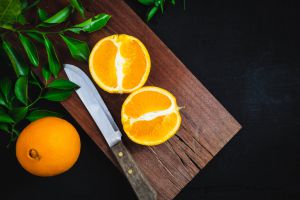
What is a Stroke?
Strokes are the fourth leading cause of death and the number one cause of long-term disability in the United States. Stroke is also a leading cause of death and long-term disability worldwide. Hypertension, smoking, hyperlipidemia, obesity, physical inactivity, diabetes, and alcohol intake are factors that increase the risk of stroke.18
Strokes can be either hemorrhagic or ischemic. Hemorrhagic strokes are less common and comprise about 20% of all strokes.19 A hemorrhagic stroke is caused by the rupture of a blood vessel, which leads to bleeding in the brain.20 An ischemic stroke is caused by either a blood clot or debris from elsewhere in the body blocking blood flow through the affected vessel.21
Platelets, which are also known as thrombocytes, play a crucial role in healthy blood clotting. However, excessive activation of platelets can contribute to several disorders, including high blood pressure and strokes. Platelet dysfunction is associated with the formation of blood clots and cardiovascular disease in general.2

According to research, flavonoids reduce cell adhesion and improve the function of the vascular endothelium, which is the lining of the blood vessels. Epidemiological reports show the higher the consumption of citrus flavonoids, the lower the platelet activity. Therefore, citrus flavonoids can play a protective role against cardiovascular disease via their effect on platelets. Since flavonoids inhibit platelet function, they could be valuable anti-clotting agents to prevent ischemic stroke.2
A clinical trial concluded that drinking a glass of orange juice every day reduces the risk of stroke in men by 25%. Similarly, another clinical trial that included 14 years of follow-up in 69,622 female nurses concluded that ingesting large amounts of flavanones through orange and grapefruit juice reduces the risk of ischemic stroke by 19% in women.13
A large study with over 10,000 participants demonstrated an inverse association between daily citrus fruit intake and cardiovascular disease, specifically ischemic stroke. An inverse association means the more citrus fruits consumed, the lower the risk of stroke.2
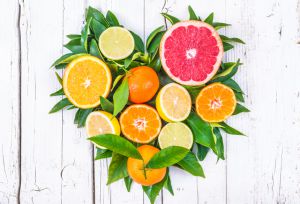
What is Hyperlipidemia?
Hyperlipidemia is characterized by elevated or imbalanced lipid levels in the body. The lipids (fats) include total cholesterol, triglycerides, lipoproteins, chylomicrons, very low-density lipoprotein (VLDL), low-density lipoprotein (LDL), apolipoproteins, and high-density lipoprotein (HDL). Those with hyperlipidemia have approximately twice the risk of developing cardiovascular disease compared to those with normal cholesterol levels.22
A diet high in saturated or trans fats, physical inactivity, obesity, and smoking can increase the risk of developing hyperlipidemia. Several health conditions directly cause hyperlipidemia, including type 2 diabetes mellitus and hypothyroidism.22

In one clinical trial, participants with high cholesterol levels supplemented with 270 mg of citrus flavonoids and 30 mg of tocotrienols (Vitamin E) daily for four weeks. After four weeks of treatment, the participants experienced significant reductions in total cholesterol, LDL, and triglyceride levels. In patients with mildly elevated cholesterol levels, drinking 480 ml per day of orange juice for one year reduced total cholesterol, LDL, and apolipoprotein B (apoB) levels.2
Supplementation with 500 mg per day of glucosyl hesperidin for 24 weeks significantly reduced triglyceride and apoB levels in patients with elevated triglycerides. Another clinical study showed that the consumption of citrus fruit reduces the plasma level of triglycerides in patients with cardiovascular disease. A study that included participants with elevated cholesterol levels revealed that the intake of 400 mg of naringin daily for eight weeks reduced LDL and apoB levels in plasma by 17 percent.2
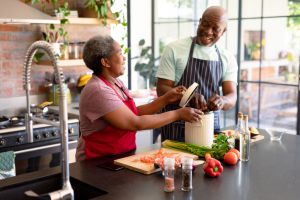
Lipids (fats) are essential for many processes in the body. Dysregulation of lipid and lipoprotein (cholesterol) metabolism is one of the major contributing factors to the development of diabetes, cardiovascular disease, obesity, and inflammation. As noted above, several studies show citrus flavonoids modulate lipid metabolism and may prevent several diseases, including atherosclerosis and other cardiovascular diseases.2*
Citrus flavonoids continue to be highly regarded by healthcare providers and researchers because they are naturally non-toxic (when consumed in recommended amounts) and offer impressive health-enhancing benefits.23 Given the role of high blood sugar, abnormal platelet activity, hyperlipidemia, inflammation, and oxidative stress in the development of cardiovascular diseases, citrus flavonoids offer multi-layered protective benefits since they not only improve these conditions but also directly support the health of the heart and blood vessels.2,13

To test for the presence and underlying causes of inflammation, consider ordering a GI-02xC Expanded GI Health Panel™ with GP3x and Calprotectin.
To place a test order, click here. As a reminder, DiagnosTechs can drop ship test kits directly to your patients. You may select this option at the top of the order form.
Please visit our Provider Tools page for more information about inflammation, calprotectin, and all of our test panels.
YOU MAY ALSO ENJOY
SYNERGISTIC NUTRIENTS FOR ADRENAL SUPPORT
We often think of supplements as vitamins and minerals that need to be taken only as needed for potential nutrient deficiencies or inadequacies. However, nutritional supplements offer much more and can manifest powerful synergistic benefits that go far beyond simply replacing the vitamins and minerals missing from your diet…
BOTANICALS TO SUPPORT A HEALTHY GUT MICROBIOME
Did you know that consuming unusual foods, eating on the go, sleep disruptions, emotional stress, schedule changes, traveling, and other factors could significantly affect the health of your gut microbiome? If you traveled or experienced increased stress during the holidays, your gut microbiome might need a tune-up for the New Year…
NATURAL IMMUNE SUPPORT FOR THE COLD AND FLU SEASON
The common cold is the most frequent human illness. Genetics, stress, smoking, nutrient deficiencies, and strenuous physical training can increase the risk of catching a cold. Modern research now confirms that supplemental vitamins, minerals, botanicals, and other natural remedies can decrease the severity and duration of the common cold…
CALPROTECTIN PLUS PANEL FOR MONITORING GI INFLAMMATION
Calprotectin is an abundant neutrophil protein, and its presence in the stool indicates neutrophilic infiltration into the gut lumen, which is associated with severe inflammation. Elevated fecal calprotectin levels are present in patients with both infectious and inflammatory conditions, including inflammatory bowel disease (IBD)…
References:
- U.S. commemorates 57th consecutive American Heart Month in February. www.heart.org. https://www.heart.org/en/around-the-aha/february-is-american-heart-month. Published November 14, 2022. Accessed December 2, 2022.
- Mahmoud AM, Hernández Bautista RJ, Sandhu MA, et al. Beneficial Effects of Citrus Flavonoids on Cardiovascular and Metabolic Health. Oxid Med Cell Longev. 2019;2019:5484138. doi:10.1155/2019/5484138
- Chen W, Wang S, Wu Y, et al. The Physiologic Activity and Mechanism of Quercetin-Like Natural Plant Flavonoids. Curr Pharm Biotechnol. 2020;21(8):654-658. doi:10.2174/1389201021666200212093130
- Alappat B, Alappat J. Anthocyanin Pigments: Beyond Aesthetics. Molecules. 2020;25(23):5500. doi:10.3390/molecules25235500
- Hostetler GL, Ralston RA, Schwartz SJ. Flavones: Food Sources, Bioavailability, Metabolism, and Bioactivity. Adv Nutr. 2017;8(3):423-435. doi:10.3945/an.116.012948
- Luo Y, Jian Y, Liu Y, et al. Flavanols from Nature: A Phytochemistry and Biological Activity Review. Molecules. 2022;27(3):719. doi:10.3390/molecules27030719
- Barreca D, Gattuso G, Bellocco E, et al. Flavanones: Citrus phytochemical with health-promoting properties. Biofactors. 2017;43(4):495-506. doi:10.1002/biof.1363
- Křížová L, Dadáková K, Kašparovská J, et al. Isoflavones. Molecules. 2019;24(6):1076. doi:10.3390/molecules24061076
- Kozłowska A, Szostak-Węgierek D. Targeting Cardiovascular Diseases by Flavonols: An Update. Nutrients. 2022;14(7):1439. doi:10.3390/nu14071439
- Popiolek-Kalisz J, Fornal E. The Impact of Flavonols on Cardiovascular Risk. Nutrients. 2022;14(9):1973. doi:10.3390/nu14091973
- Sinopoli A, Calogero G, Bartolotta A. Computational aspects of anthocyanidins and anthocyanins: A review. Food Chem. 2019;297:124898. doi:10.1016/j.foodchem.2019.05.172
- Khoo HE, Azlan A, Tang ST, et al. Anthocyanidins and anthocyanins: colored pigments as food, pharmaceutical ingredients, and the potential health benefits. Food Nutr Res. 2017;61(1):1361779. doi:10.1080/16546628.2017.1361779
- Deng Y, Tu Y, Lao S, et al. The role and mechanism of citrus flavonoids in cardiovascular diseases prevention and treatment. Crit Rev Food Sci Nutr. 2022;62(27):7591-7614. doi:10.1080/10408398.2021.1915745
- Capomolla AS, Janda E, Paone S, et al. Atherogenic Index Reduction and Weight Loss in Metabolic Syndrome Patients Treated with A Novel Pectin-Enriched Formulation of Bergamot Polyphenols. Nutrients. 2019;11(6):1271. doi:10.3390/nu11061271
- Manosroi W, Williams GH. Genetics of Human Primary Hypertension: Focus on Hormonal Mechanisms. Endocr Rev. 2019;40(3):825-856. doi:10.1210/er.2018-00071
- Reshef N, Hayari Y, Goren C, et al. Antihypertensive effect of sweetie fruit in patients with stage I hypertension. Am J Hypertens. 2005;18(10):1360-1363. doi:10.1016/j.amjhyper.2005.05.021
- Valls RM, Pedret A, Calderón-Pérez L, et al. Effects of hesperidin in orange juice on blood and pulse pressures in mildly hypertensive individuals: a randomized controlled trial (Citrus study). Eur J Nutr. 2021;60(3):1277-1288. doi:10.1007/s00394-020-02279-0
- Caprio FZ, Sorond FA. Cerebrovascular Disease: Primary and Secondary Stroke Prevention. Med Clin North Am. 2019;103(2):295-308. doi:10.1016/j.mcna.2018.10.001
- Montaño A, Hanley DF, Hemphill JC 3rd. Hemorrhagic stroke. Handb Clin Neurol. 2021;176:229-248. doi:10.1016/B978-0-444-64034-5.00019-5
- Unnithan AKA, M Das J, Mehta P. Hemorrhagic Stroke. In: StatPearls. Treasure Island (FL): StatPearls Publishing; September 30, 2022.
- Hui C, Tadi P, Patti L. Ischemic Stroke. In: StatPearls. Treasure Island (FL): StatPearls Publishing; June 2, 2022.
- Karr S. Epidemiology and management of hyperlipidemia. Am J Manag Care. 2017;23(9 Suppl):S139-S148.
- Ciumărnean L, Milaciu MV, Runcan O, et al. The Effects of Flavonoids in Cardiovascular Diseases. Molecules. 2020;25(18):4320. doi:10.3390/molecules25184320


